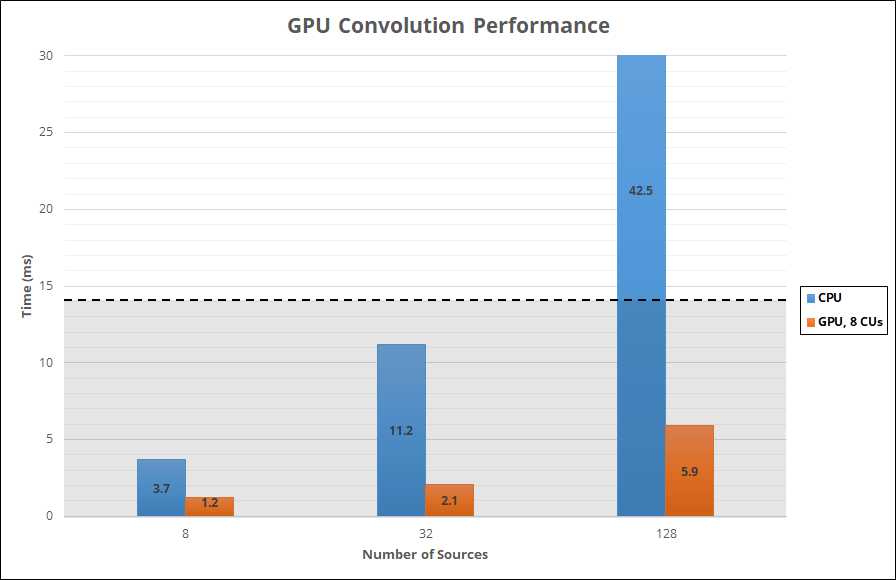I'In the domain of 3D audio, we're talking about physical simulation of audio in 3D space.
That's only part of it. You've lots of audio data to mix and process too, as well as the tracing.
Edit: As I understand it, the tracing records the audio energy. It should be possible to trace an audio impulse to record its energy, and then apply that to an audio processor to mix that audio appropriately.
They discontinued their DSP and switched to OpenCL on the GPU. Maybe they're selling snake oil. I don't know.
More likely it added complexity and cost for a feature no-one was using and wasn't going to sell GPUs. Hence move it to compute where it's less efficient but doesn't limit who can use it. You may then get some devs actually using it. PC doesn't need to worry about efficiency as much as consoles do; you can always sell people a faster GPU when their current one isn't good enough for them.
There's some factor where the efficiency drops to a point where it's worth while to make custom silicon. For dollars of research and fab, I don't know where that line is.
Exactly. And none of us knows where that line is. However, it exists, which is why audio on GPU isn't the only sensible option here and why custom audio hardware can't be discounted as unrealistic or unnecessary.
As a counter to your HEVC point, where are all of the dedicated physics accelerators? CUs have a lot of silicon a physics accelerator wouldn't need, but they don't exist in the consumer space because I'm assuming you're better off just putting more money into your GPU.
You can't be sure PPUs are going to get used. Plenty of games have little need for complex physics. All games need audio so putting an audio processor in there, you know it's going to be used extensively. PPUs also aren't small AFAIK, unlike DSPs, having more in common with GPUs than DSPs have.
As MrFox states, 36 CUs looks to be about the size of PS4's SOC. If Sony wanted to stop there for economic reasons, yet Cerny wants next-gen audio, an obvious option would be adding DSP audio as a more economical solution.
Do you not think the acquisition of Audiokinetic in January 2019 was driven by some particular need? Do you think that's a fairly random investment without any specific intent? Taken all together, we've got:
Interview states custom 3D audio hardware (although that's not Cerny's words quoted).
Interview where Cerny says he wants next-gen audio with 3D positional audio and the gold standard will be headphones - he wants proper, effective HRTF audio.
A cost-limited hardware design that really needs optimal hardware economy.
Sony's acquisition of Audiokinetic nearly two years before PS5's release.
The idea of Sony having a custom audio block driven by an audio API fits that full overview better than Sony just using GPU audio, as GPU audio will take a notable amount from the graphics and wouldn't need Audiokinect expertise to create a library.
Again, I'm not saying custom hardware is in, but the argument that it's out is weaker IMO than the argument that it's in, where some are quick to discount the possibility of custom hardware completely.
Edit: Cell should be ideal and tiny (few mm²) and provide PS3 BC. Just saying. 
